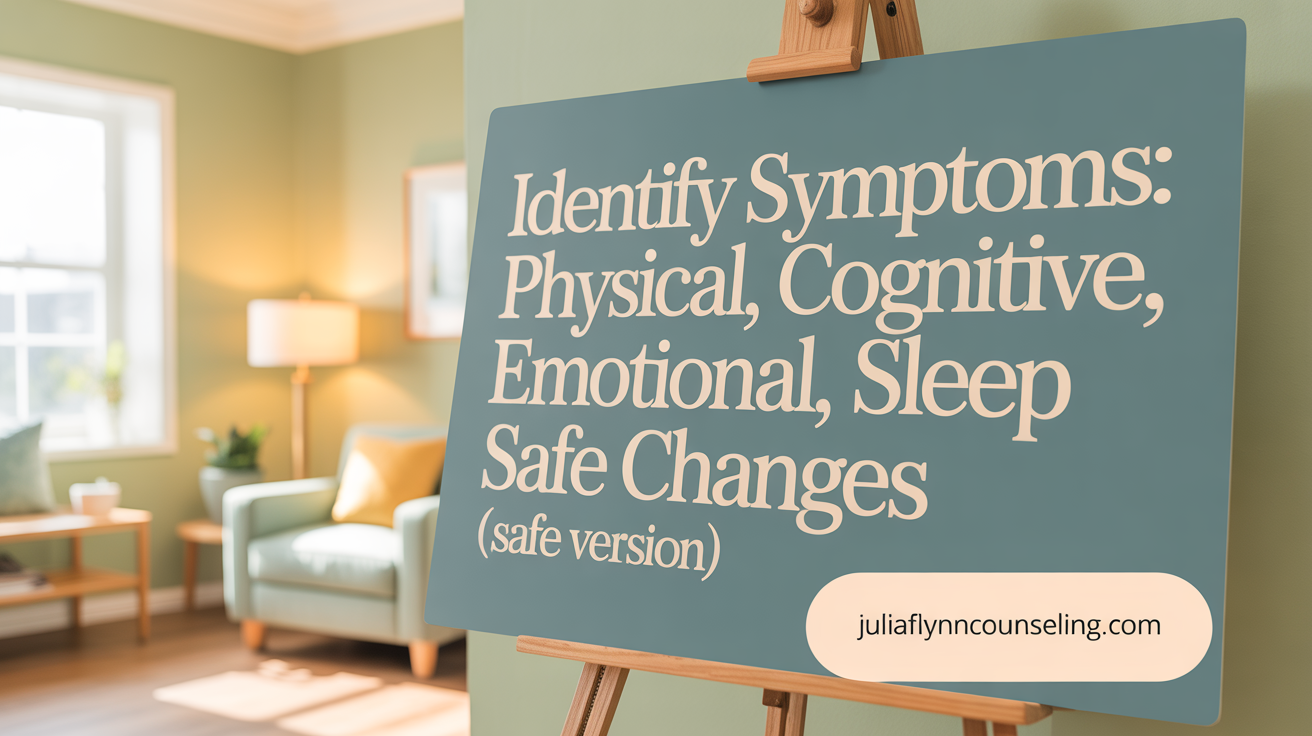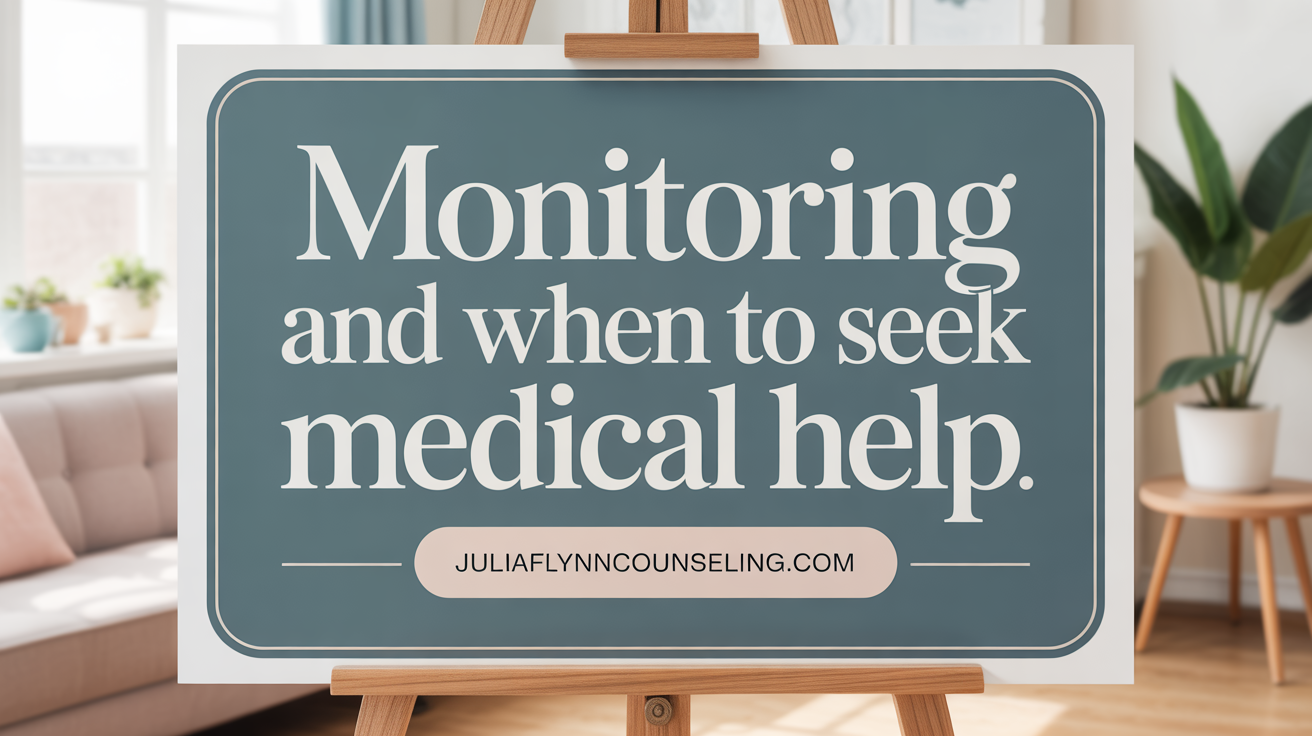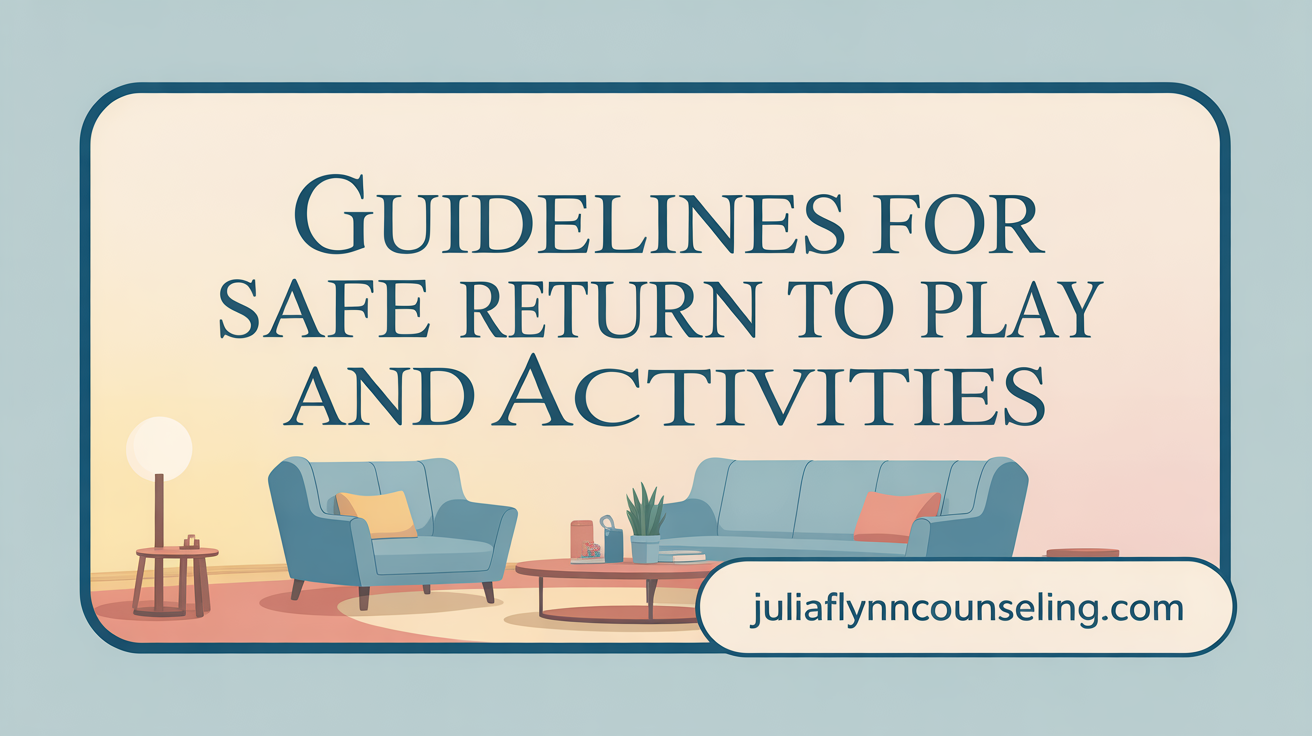Understanding the Impact of Concussions on Children
Concussions are a common but often misunderstood form of mild traumatic brain injury, particularly in children and adolescents who frequently engage in physical activities and sports. Recognizing the signs and symptoms of a concussion as early as possible and responding appropriately are crucial steps to ensure proper care and full recovery. This article explores how to identify concussions in children, response protocols, diagnosis, treatment, recovery processes, and preventive measures—all aimed at safeguarding young brains and promoting long-term wellbeing.
Recognizing the Signs and Symptoms of Child Concussions

What are the common signs and symptoms of concussion in children?
Concussions in children often present with a variety of physical, cognitive, emotional, and sleep-related signs. Typical physical symptoms include headaches, dizziness, nausea or vomiting, and sensitivity to light or sound. Children might also experience vision problems, fatigue, and balance issues. Cognitive signs include difficulty concentrating, feeling slowed down, and memory problems. Emotional changes such as irritability, anxiety, sad mood, or mood swings are frequent, especially in younger children. Sleep disturbances are also common, which may involve trouble falling asleep or sleeping more or less than usual.
Age-specific signs in infants, toddlers, and adolescents
Signs of concussion vary by age group. In infants, common indicators include increased irritability, excessive or decreased sleeping patterns, refusal to feed, and changes in speech. Toddlers may show similar signs plus inconsolable crying, withdrawal, and feeding difficulties. In older children and adolescents, signs often include a dazed appearance, confusion, difficulty focusing, vomiting, slowed reaction times, and behavioral changes.
Physical, cognitive, emotional, and sleep-related symptoms
The symptoms of concussion cover multiple areas:
- Physical: headaches, dizziness, nausea, vision issues, confusion, fatigue.
- Cognitive: problems with concentration, processing, or memory.
- Emotional: irritability, anxiety, sadness, behavior shifts.
- Sleep: disturbances such as trouble sleeping or sleeping too much. Recognizing these signs early is crucial for prompt care and recovery.
Danger signs requiring urgent medical care
Certain symptoms signal a severe brain injury and demand immediate medical attention. These include seizures, inability to recognize familiar people or places, repeated vomiting, unusual behavior, unconsciousness or unresponsiveness, slurred speech, weakness, and a worsening headache. Emergency signs also encompass pupils that are unequal or dilated, excessive drowsiness, or if the child cannot be awakened. Prompt action can be life-saving, so call emergency services if any of these symptoms are observed.
| Symptom Type | Specific Signs | When to Seek Help |
|---|---|---|
| Physical | Headache, dizziness, nausea, vomiting | Immediately, if persistent or severe |
| Cognitive | Confusion, memory problems | If persistent or worsening |
| Emotional | Mood swings, irritability | When emotional changes are severe |
| Sleep | Sleep disturbance, fatigue | If sleep pattern worsens or does not improve |
| Severe Signs | Loss of consciousness, seizures, pupil changes, inability to wake | Seek emergency care immediately |
Monitoring for these signs and symptoms, especially within the first hours to days after injury, can help ensure children receive prompt and appropriate care, supporting full recovery.
Immediate Care and Appropriate Response to Suspected Concussions

Initial steps caregivers should take
When a child exhibits signs of a concussion, the first and most important step is to immediately stop any physical activity to prevent further injury. Caregivers should closely observe the child for worsening symptoms or warning signs like severe headache, repeated vomiting, seizures, or loss of consciousness. It’s vital to provide a safe environment to rest and avoid activities that could increase brain injury risk. Supportive care includes ensuring the child stays calm, keeps hydrated, and rests both physically and mentally. Limiting screen time and avoiding strenuous activities are crucial until professional evaluation. Following the healthcare provider’s instructions helps facilitate proper recovery and safe return to daily routines or sports.
Monitoring for worsening or danger signs
Caregivers should vigilantly monitor the child's condition over the next hours and days. Signs that indicate the need for urgent medical attention include worsening headaches, persistent or increasing vomiting, drowsiness or inability to wake, disorientation, weakness or numbness, slurred speech, or unusual changes in behavior. Observing neurological functions such as pupil response, coordination, and responsiveness is important. Persistent or escalating symptoms may signal a severe brain injury requiring medical intervention.
When to seek emergency medical help
Emergency medical services should be called immediately if a child shows more serious signs such as loss of consciousness (even briefly), seizures, difficulty breathing, dull or unequal pupil sizes, persistent vomiting, bleeding from the ear or nose, or dramatic personality changes. For infants and toddlers, unsoothable crying, difficulty waking, skull deformities, or unresponsiveness also necessitate urgent care. In all cases, if there is any suspicion of a severe head injury—especially after a high-impact fall or accident—call 911 or proceed directly to the nearest emergency department. Prompt evaluation can determine the severity of the injury and prevent long-term complications.
Importance of early professional assessment
It is essential to have a healthcare professional assess the child within 24 to 48 hours after a suspected concussion. Medical evaluation involves physical examination and symptom assessment, and may include tests of memory and balance. Early diagnosis and management are crucial to ensure proper recovery and to prevent complications like post-concussion syndrome. Children with persistent or worsening symptoms require close follow-up and possibly specialized care. With appropriate rest, gradual return to activities, and medical guidance, most children recover fully within weeks.
Diagnosis and Medical Management of Concussions in Children
How healthcare providers assess concussion
When a child is suspected of having a concussion, healthcare providers perform a detailed physical exam and ask about the injury and current symptoms. They look for signs like balance problems, confusion, or behavioral changes. The provider also evaluates questions related to memory, concentration, and orientation to determine the impact of the injury.
Tests and examinations used
Assessment often includes tests of memory, reaction time, and coordination to gauge brain function. Standardized tools like the ImPACT™ computerized neurocognitive test are common, especially for athletes, providing a baseline for comparison if a concussion occurs.
Why imaging is rarely needed
Imaging tests such as CT scans or MRIs are generally unnecessary unless the child shows severe symptoms—like loss of consciousness, seizures, or worsening headache—that suggest a more serious brain injury. Most concussions are diagnosed based on clinical history and physical exam findings, not imaging, to avoid unnecessary radiation and costs.
Follow-up and monitoring importance
Continued medical supervision is vital for ensuring proper recovery. Children are typically observed for worsening symptoms, such as increased headache, dizziness, or behavioral changes. Persistent symptoms beyond a few weeks may require further assessment, possibly involving specialists. Regular follow-up helps confirm the injury is healing properly, guides a safe return to normal activities, and prevents complications like post-concussion syndrome.
| Key Aspect | Description | Additional Notes |
|---|---|---|
| Initial assessment | Physical exam, symptom review, cognitive testing | Done promptly within 24-48 hours |
| Diagnostic tests | Memory, reaction time, balance tests | Use computerized assessments like ImPACT™ |
| Imaging procedures | CT or MRI | Reserved for serious or worsening symptoms |
| Monitoring | Symptom tracking, gradual activity resumption | Essential for complete recovery |
| Follow-up care | Physician evaluation, school accommodations, medication management | Prevents long-term issues |
Recovery Procedures and Return-to-Activity Guidelines

What are the typical recovery guidelines and care procedures for children after a concussion?
Children recovering from a concussion need a careful, step-by-step approach to regain their normal activities safely. Immediately after the injury, rest is crucial. This includes both physical rest—avoiding sports, running, or strenuous activities—and mental rest, such as limiting screen time, reading, or school work that can cause fatigue.
During the first 24 to 48 hours, close monitoring of symptoms is vital with particular attention to warning signs like severe headache, confusion, vomiting, or loss of consciousness. If these occur, urgent medical care is necessary. In most cases, children gradually start light physical activities such as walking, and cognitive activities are slowly reintroduced under medical guidance.
Most children recover fully within two to four weeks, although some may experience longer-lasting symptoms. Their recovery includes a phased return to normal routines, with regular check-ins to ensure symptoms do not worsen. Support at school may involve academic adjustments, such as shortened days, extra breaks, or reduced homework, to promote healing.
A structured return-to-sports protocol is essential, involving multiple stages—starting from light aerobic exercise, progressing to sport-specific drills, and only resuming full play after complete symptom resolution and clearance from a healthcare provider. This gradual process helps prevent another injury and promotes full recovery.
Throughout this period, parents and caregivers should encourage proper hydration, healthy eating, adequate sleep, and an environment that minimizes stressors. Keeping in touch with healthcare professionals for ongoing assessment ensures the child's recovery is on track and safe for re-engagement in their usual activities.
Concussion Awareness and Prevention for Children and Caregivers
How can concussion awareness and education be provided effectively to children and their caregivers?
Educating children and caregivers about concussions requires tailored, straightforward communication that matches the understanding level of each age group. Using trusted resources such as the CDC's "Heads Up" campaign or specialized hospitals enhances credibility and access to reliable information.
Parents and guardians should be informed about common signs and symptoms of concussion, including headaches, dizziness, changes in mood, sleep disturbances, and behavior alterations. Emphasizing the importance of prompt reporting of head injuries helps in early detection and management.
Schools and coaches play a critical role by integrating concussion education into sports programs and classroom settings. Teaching safe practices, like proper use of helmets and techniques to avoid head-to-head collisions, supports prevention.
Practical guidance should include instructions on initial steps after a suspected concussion, such as removing the child from activity, seeking medical evaluation, and gradual return-to-play protocols.
Creating an environment where children feel comfortable reporting symptoms without fear of embarrassment encourages honesty and swift action.
Training teachers, coaches, and school health staff on concussion recognition enhances a community-wide safety network. Overall, a comprehensive approach combining age-appropriate education, resource utilization, and community involvement ensures children’s safety and promotes prompt, proper response to concussions.
Special Considerations for Sports-Related Concussions in Children
What special considerations apply to sports-related concussions in children?
Children are more vulnerable to sports-related concussions than adults and tend to have longer recovery periods. This heightened sensitivity requires careful attention to injury recognition and management.
Injuries often occur during contact sports such as football, hockey, soccer, and lacrosse, but can also happen during recreational activities like biking or skateboarding. The brain in children is still developing, making it more susceptible to injury and slower to heal.
Immediate removal from play is critical once a concussion is suspected. This prevents further injury and allows healthcare professionals to evaluate the child properly. Prompt medical assessment assesses the severity and guides subsequent treatment.
A structured, stepwise return-to-play protocol is essential. Under medical supervision, children gradually resume activities, starting with rest and light exercise and slowly progressing to full contact sports only after all symptoms resolve and medical clearance is given.
Education plays a vital role. Coaches, parents, and the athletes themselves should be aware of concussion signs such as dazed appearance, confusion, or behavioral changes. Understanding prevention measures, including proper techniques and protective gear, further helps reduce risk.
Avoiding premature return to sports is crucial. Returning too early can lead to repeated injuries, which have more severe consequences. Individualized management ensures each child's recovery process considers their specific needs and development stage.
By prioritizing rapid recognition, proper care, cautious return, and education, we can better protect young athletes from the adverse effects of concussions while allowing them to participate safely in sports activities.
Ensuring Safe Recovery and Long-Term Protection
Recognizing and responding to concussions in children demands vigilance, prompt action, and ongoing education. Understanding the broad spectrum of symptoms, knowing when to seek medical help, and adhering to medical guidance can ensure optimal recovery and prevent further injury. Support from caregivers, schools, and sports programs reinforces a child’s journey back to full health. Through awareness, prevention, and careful management, we can protect young minds from the lasting impacts of concussions and promote safe participation in sports and daily activities.
References
- Signs and Symptoms of Concussion | HEADS UP - CDC
- Recognizing and Responding to Concussions: A Caregiver's Guide
- Concussion in children: What are the symptoms? - Mayo Clinic
- Concussions in Children & Teens: What Parents Need to Know
- How to Recognize and Treat Concussions in Kids
- What to do After a Concussion | HEADS UP - CDC
- Concussions - Pediatric Orthopedic Specialists
- Signs of Concussion in a Child & Treatment | Mass General Brigham
